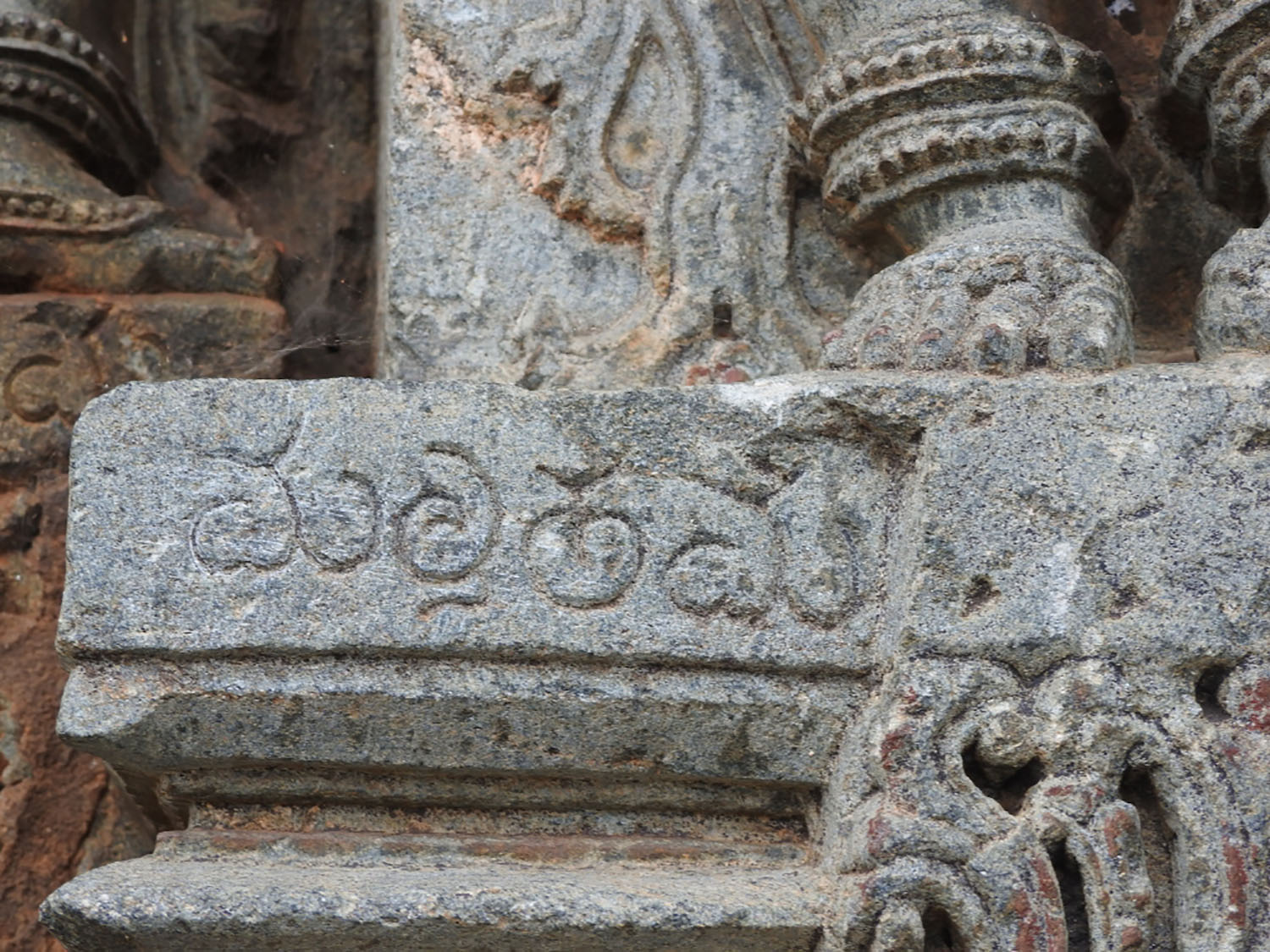ARTICLE
Ruvari Mallithamma
Known to have worked over a span of more than sixty years during the thirteenth-century, Ruvari Mallithamma is considered to be one of the most prolific and important sculptors who worked for the Hoysala court. His inscribed signatures attest to his contribution to a large number of Hoysala temples in present-day Karnataka, India, notably the Chennakeshava temple, Somanathapura. While he gained particular recognition for his work on Vaishnava temples and developed an expertise in their iconography, his contributions to Shaivite temples are also known.
The details of Mallithamma’s early life are obscure as his signatures did not provide biographical details such as place of birth, unlike those of some of his predecessors and contemporaries, such as Dasoja and Chavana. Based on an inscription mentioning a figure named Mallithamma, dated to the reign of the Hoysala ruler Someshvara (r. 1235–63), some scholars suggest that the sculptor may have been from a place called Panchajanya in present-day Hassan district, Karnataka. However, it remains unclear whether the inscription refers to the sculptor.
The earliest project he is associated with is the Amruteshvara temple, Amruthapura in present-day Chikmagalur district, Karnataka, dated to 1196. Here Mallithamma worked on the the mukhamandapa or front hall, constructed some years later around 1206, carving ceilings of the central and southern parts and the northern doorway of the structure.
The next dated structure attributed to Mallithamma is the Lakshmi Narasimha temple, Haruvanahalli (now Haranhalli, in present-day Hassan district, Karnataka), where he worked on sculptures, friezes and scroll ornamentation on the northern side of the temple and at the base of the main cell. The friezes include depictions of yakshas, yakshis, horsemen, elephants and makaras. His signature is found on several Vishnu images on the site as well as on sculptures of Sankarshana, Pradyumna, Aniruddha, Garuda and Lakshmi.
Around 1237, he sculpted two dvarapala, or door-guardian, images for the Shaivite Panchalingeshvara temple, Govindanahalli (present-day Mandya district, Karnataka), although he was likely not extensively involved in the temple. In the 1240s, he contributed to the Lakshmi Narasimha temples at Nuggehalli and Javagal, both in Hassan district. At Nuggehalli, as at Haranhalli, Mallithamma worked on the northern side of the temple, as well as a section on the western side, sculpting images of Indra and his consort Sachi, as well as various forms of Vishnu. At Javagal, he worked on the southern section. At both these sites, he may have undertaken the role of a supervisor in addition to sculpting images. He also worked on the Kedareshvara temple, Nagalapura around the same time.
Mallithamma’s most significant project was the Chennakeshava temple, Somanathapura, which was completed around 1268. He worked on the north tower of the temple, creating sculptures and friezes depicting scenes from Ramayana and Mahabharata, forms of Vishnu such as Janardana, a figure of a dancing female deity and an image of Mahishasuramardini. Scholars suggest that by the time he began work on the temple, Mallithamma may have been a renowned artist not only among his peers but also among Vaishnavite patrons in the region, for his contributions to Vishnu temples and his familiarity with Vaishnavite iconography. Therefore, it is likely that he was invited to work on the temple by its patron Somanadannayaka. By this time, however, Mallithamma is likely to have been too old to create the sculptures himself, and his contribution to the temple may have involved designing the sculptures and leading a workshop of artisans to execute them.
Bibliography
Salvi, Poorva Arun. “The Signed Sculptures of Lakshmi-Narasimha Temple of Harnahalli: Hoysala Sculptors and Their Intricate Designs.” Sahapedia, July 30, 2020. Accessed March 15, 2023. https://www.sahapedia.org/signed-sculptures-lakshmi-narasimha-temple-harnahalli-hoysala-sculptors-and-their-intricate-designs.
Settar, S. “The Hoysala Artists (c. 1100–1336).” In Indian Art: Forms, Concerns and Development in Historical Perspective, edited by B. N. Goswamy and Kavita Singh, 181–205. New Delhi: Munshiram Manoharlal Publishers Pvt. Ltd., 2000.
University of Mysore. Annual Report of the Mysore Archaeological Department For the Year 1932. Bangalore: Superintendent at the Government Press, 1935.
University of Mysore. Annual Report of the Mysore Archaeological Department For the Year 1933. Bangalore: Superintendent at the Government Press, 1936.







